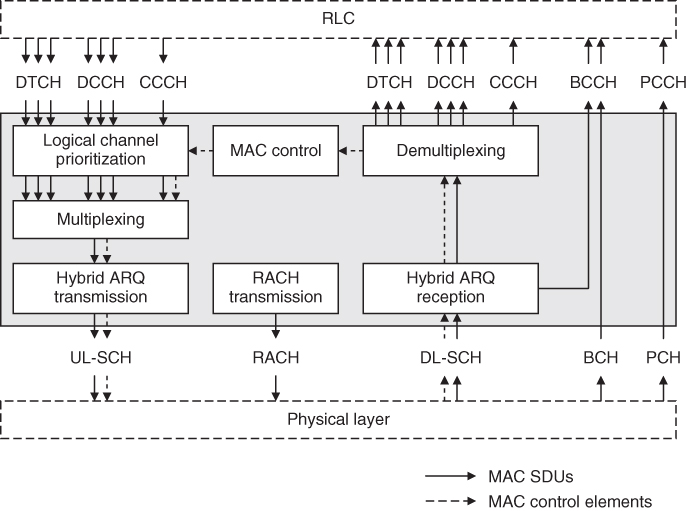Chapter 10Air Interface Layer 2
We have now completed our survey of the air interface's physical layer. In this chapter, we round off our discussion of the LTE air interface by describing the three protocols in the data link layer, layer 2 of the OSI model. The medium access control protocol schedules all the transmissions that are made on the LTE air interface and controls the low-level operation of the physical layer. The radio link control protocol maintains the data link across the air interface, if necessary by re-transmitting packets that the physical layer has not delivered correctly. Finally, the packet data convergence protocol maintains the security of the air interface, compresses the headers of IP packets and ensures the reliable delivery of packets after a handover.
10.1 Medium Access Control Protocol
10.1.1 Protocol Architecture
The medium access control (MAC) protocol [1, 2] schedules the transmissions that are carried out on the air interface and controls the low-level operation of the physical layer. There is one MAC entity in the base station and one in the mobile. To illustrate its architecture, Figure 10.1 is a high-level block diagram of the mobile's MAC protocol.

Figure 10.1 High-level architecture of the mobile's MAC protocol.
Source: TS 36.321. Reproduced by permission of ETSI
In the transmitter, the logical channel prioritization function determines ...
Get An Introduction to LTE: LTE, LTE-Advanced, SAE, VoLTE and 4G Mobile Communications, 2nd Edition now with the O’Reilly learning platform.
O’Reilly members experience books, live events, courses curated by job role, and more from O’Reilly and nearly 200 top publishers.

